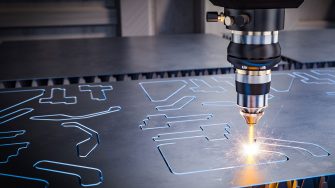
Class 3B and Class 4 lasers are capable of causing eye injury to anyone who looks directly into the beam or its reflections from a specular (mirror-like) surface. In addition, diffuse reflections of a high-power laser beam can produce permanent eye damage.
High-power laser beams can burn exposed skin, ignite flammable materials, and heat materials that release hazardous fumes, gases, or radiation.
Laser equipment
Equipment and optical apparatus required to produce and control laser energy may also introduce additional hazards associated with high voltage, high pressure, cryogenics, noise, other forms of radiation, flammable materials, and toxic fluids.
Each proposed experiment or operation involving a laser must be evaluated to determine the hazards involved and the appropriate safety controls required. Researchers are required to provide Project/Program applications forms to UNSW Radiation Safety Committee(RSC) for approval.



